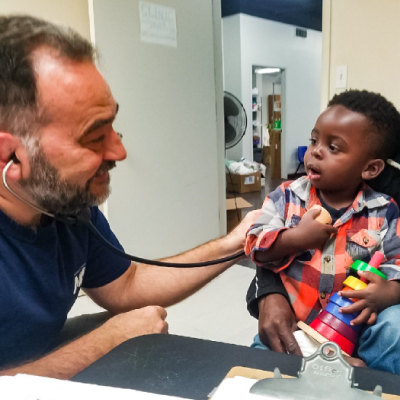- Who We Are
- Clinician Employment
- Publications
- Witness to Witness (W2W)
- El Premio Kugel & Zuroweste a la Justicia en la Salud
- Your Voice Matters: Photovoice Project
Wed, 10/08/2014 | by Claire Hutkins Seda

EDIT: MCN is saddened to hear Thomas Duncan has passed away. We offer our condolences to his family and friends.
On September 25, Thomas Eric Duncan went to Texas Health Presbyterian Hospital in Dallas, Texas, with an unspecified illness. During the intake interview with the nurse, he noted that he had recently returned from Liberia, the country at the epicenter of the Ebola virus, which has already claimed the lives of more than 3400 people in West Africa.
The travel information was noted in the Electronic Health Record (EHR), and the patient soon after saw a physician. The physician did not see the travel information from the EHR.
The doctor determined that the patient had a “low-grade common viral disease,” according to NPR. The patient returned home, only to become increasingly ill, and returned to the hospital three days later. Another two days passed before he was diagnosed with Ebola, on September 30.
What went wrong here? At first, the hospital claimed that the information that the nurse entered in the EHR was not available to the doctor, pointing to an EHR technical error, but within two days it issued a clarifying statement reversing that claim:
“As a standard part of the nursing process, the patient's travel history was documented and available to the full care team in the electronic health record (EHR), including within the physician's workflow. There was no flaw in the EHR in the way the physician and nursing portions interacted related to this event.”
This news story exposes ongoing problems in clinical systems that many clinicians, both those working with migrants and those working with the general public, have struggled with for decades. In a recent talk in Merced, California, Jennie McLaurin, MCN’s specialist for child and migrant health and bioethics, noted that a high proportion of preventable hospital readmissions are due to poor communication; that is, not just technological glitches, but also old-fashioned communication between team members. Despite the technological advances, which have promised to increase communication in the team, in this case the EHR failed to relay basic, key information on the patient.
“We encounter a similar issue in migrant health,” noted Amy Liebman, MCN’s director of environmental and occupational health. “The data that is collected at intake,” such as if a patient is an agricultural worker, “is [often] not transferred to the clinician,” said Liebman. As a result, clinicians may not be able to make an informed diagnosis.
Information on occupation -- if it is asked for -- is often funneled towards administrative and reimbursement efforts, and might not reach the patient’s clinician. That’s a problem, says Liebman.
MCN works to assist clinicians in recognizing the importance of occupation in differential diagnosis through its environmental and occupational health program. “[A clinician’s] treatment and management of the disease might be different” if the clinician has a greater awareness of the day-to-day life of the patient, particularly occupation. (Taking a patient’s history will be the topic of the next installment of this blog post, later this week.)
In the case of Mr. Duncan, he had been living and working in the Liberian capital of Monrovia for the last two years, and had worked as a driver for a Liberian customs clearance agent for FedEx. He hadn’t just been travelling in Africa recently; he was living and working there.
MCN works with clinicians to recognize and diagnose occupational exposures and injuries of migrants to assure that the clinicians can better pinpoint the causes of illness and better communicate with their team. Here are just a few of our programs to help migrant clinicians connect the dots:
- Health Network: Our bridge case management program helps the mobile poor continue treatment as they move. This program goes beyond EHR by actively and directly communicating (often by phone) with patients and clinics to assure culturally-appropriate continuity of care for mobile patients in need of ongoing treatment.
- Workers and Health Partnerships: MCN partners with health clinics to develop simple, practical and flexible adaptations to integrate environmental and occupational health (EOH) into the primary care setting through a year-long collaboration.
- Continuing Education: We provide a number of webinars to help clinicians better understand the issues that face the migrant community, including a webinar focused on pesticide exposure.
- Emergency Preparedness: MCN provides resources and assistance to clinics to assure that migrant populations are integrated into emergency plans.
- Cultural Competence of Clinicians: Awareness of a patient’s cultural context can be a critical diagnostic tool.







